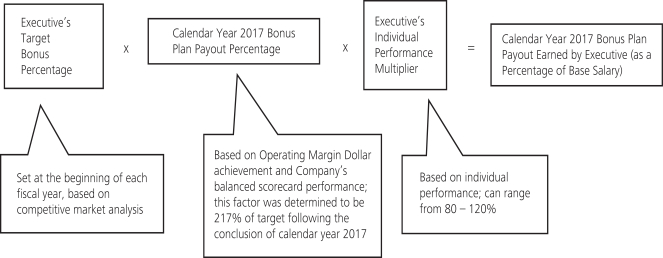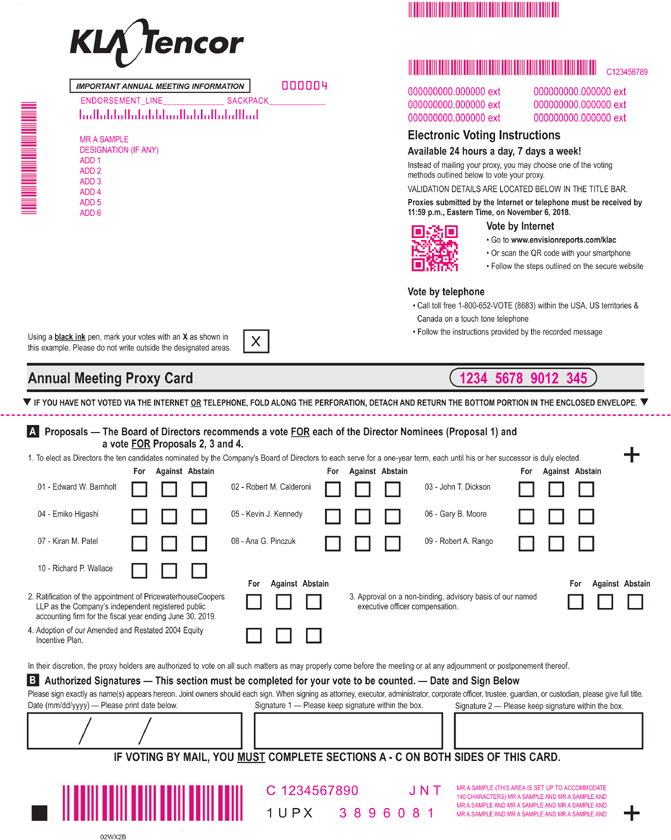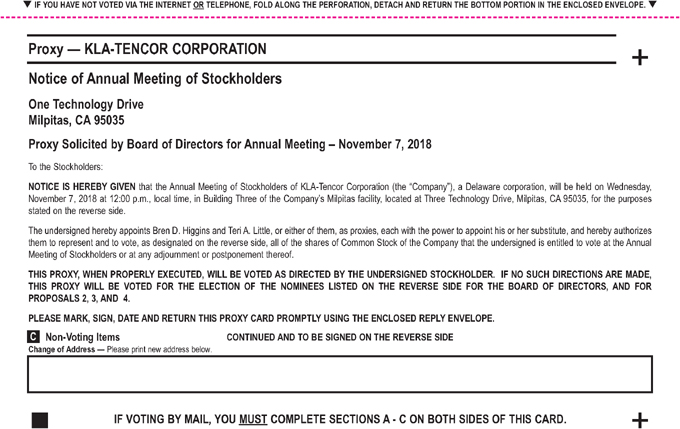
NOTICE OF ANNUAL MEETING OF STOCKHOLDERS
November 7, 2018
To our stockholders:
YOUR VOTE IS IMPORTANT
NOTICE IS HEREBY GIVEN that the Annual Meeting of Stockholders of KLA-Tencor Corporation (“we” or the “Company”), a Delaware corporation, will be held on Wednesday, November 7, 2018 at 12:00 p.m., local time, in Building Three of our Milpitas facility, located at Three Technology Drive, Milpitas, California 95035, for the following purposes:
| 1. | To elect the ten candidates nominated by our Board of Directors to serve as directors for one year terms, each until his or her successor is duly elected. |
| 2. | To ratify the appointment of PricewaterhouseCoopers LLP as our independent registered public accounting firm for the fiscal year ending June 30, 2019. |
| 3. | To approve on a non-binding, advisory basis our named executive officer compensation. |
| 4. | To adopt our amended and restated 2004 Equity Incentive Plan, which (i) increases the authorized number of shares by 12,000,000 shares, and (ii) allows withholding of shares upon vesting of awards to satisfy tax withholding obligations up to the maximum statutory rate, and (iii) allows the administrator of the plan to designate a performance-based award as being subject to the Company’s clawback policy, and thus subject to forfeiture in whole or in part. |
| 5. | To transact such other business as may properly come before the Annual Meeting or any adjournment thereof. |
The foregoing items of business are more fully described in the Proxy Statement accompanying this Notice.
Only stockholders of record at the close of business on September 13, 2018 are entitled to notice of, and to vote at, the Annual Meeting and any adjournment or postponement thereof.
Sincerely,

Richard P. Wallace
President and Chief Executive Officer
Milpitas, California
This Notice of Annual Meeting of Stockholders, Proxy Statement and form of proxy are being distributed and made available on or about September 28, 2018.
All stockholders are cordially invited to attend the Annual Meeting in person; however, regardless of whether you expect to attend the Annual Meeting in person, we encourage you to vote as soon as possible. You may vote by proxy over the Internet or by telephone, or, if you received paper copies of the proxy materials by mail, you can also vote by mail by following the instructions on the proxy card or voting instruction card. Voting over the Internet, by telephone or by written proxy or voting instruction card will ensure your representation at the Annual Meeting regardless of whether you attend in person.



